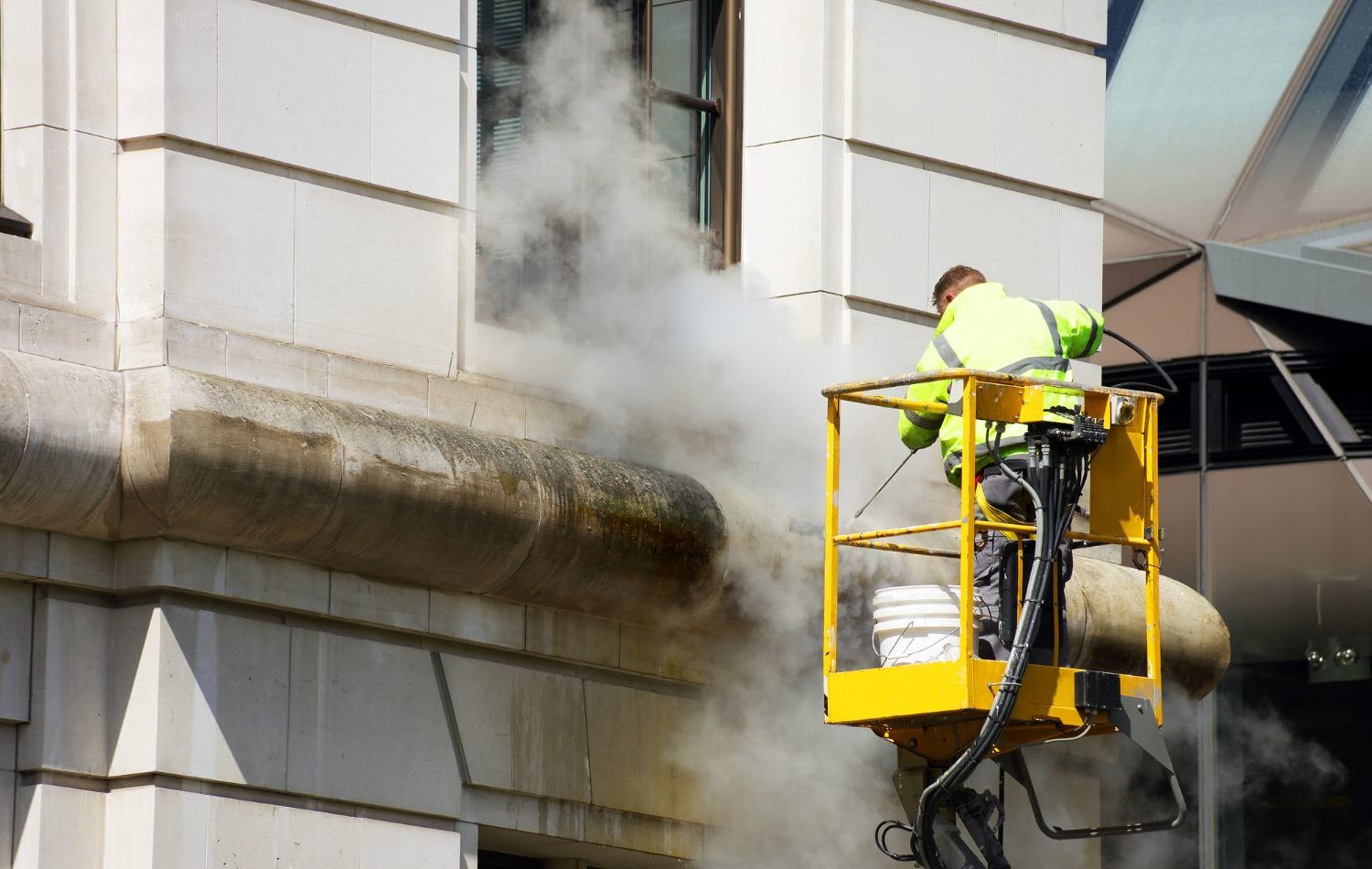
Outdoor walls, especially those near fire pits, grills, chimneys, or areas affected by wildfires, can accumulate layers of smoke and soot that stain and dull their appearance. These black streaks and smudges are more than just unsightly—they can also signal embedded pollutants that contribute to long-term surface degradation. 😬
Pressure washing is one of the most effective ways to remove soot and smoke stains from brick, stone, vinyl, or concrete walls—but you need to do it right. Using the wrong settings or cleaning solution can smear the stains or drive them deeper into porous surfaces. In this guide, we’ll walk you through how to remove smoke and soot safely and effectively with pressure washing. 💦🧽
🧱 Why Smoke and Soot Stains Are Tricky
Soot is made up of fine black carbon particles from incomplete combustion of organic material (like wood, charcoal, or fossil fuels). It sticks to surfaces, penetrates pores, and bonds with oils, moisture, and dirt. When left untreated, soot:
- Can permanently discolor surfaces
- Harbors harmful pollutants
- Promotes mildew or mold growth
- Weakens brick or mortar over time
- Smells bad and looks worse 😷
🔍 What Surfaces Can Be Safely Cleaned?
Pressure washing is great for removing soot from these materials:
| Surface Type | Safe to Pressure Wash? | Tips |
|---|---|---|
| Brick | ✅ Yes | Use moderate pressure and test mortar joints |
| Concrete | ✅ Yes | Pre-treat heavily stained areas |
| Vinyl siding | ✅ Yes | Use low pressure and avoid seams |
| Stucco | ⚠️ Caution | Use low pressure and avoid direct hits |
| Painted wood | ❌ No | Use hand washing instead |
Always test a small area before doing the full surface. 🧪
🧰 Tools & Supplies You’ll Need
- Pressure washer (2,000–3,000 PSI for masonry, 1,500 for siding)
- 15° or 25° spray tip
- Soot-removal detergent or degreasing cleaner
- Pump sprayer or foam cannon
- Soft-bristle brush (for stubborn soot)
- Safety goggles, gloves, and mask
- Drop cloths to protect nearby items
🔥 Use a cleaner specifically designed for soot or smoke—avoid general-purpose cleaners that can smear carbon stains.
Browse Amazon Here For Pressure Washers And Accessories
🧼 Step-by-Step Guide to Remove Soot with Pressure Washing
1️⃣ Prep the Area
- Remove outdoor furniture or decorations
- Cover nearby plants and outlets with tarps or plastic
- Close any windows or vents
- Sweep or rinse away loose dirt and debris
Protection is key—soot and carbon dust can get everywhere if disturbed. 🧤
2️⃣ Apply Cleaning Solution
Using a pump sprayer or foam cannon, apply your soot-removal detergent evenly across the stained area. Let it dwell for 10–15 minutes, but don’t let it dry.
Recommended mixtures:
- Commercial soot remover (diluted per instructions)
- DIY alternative: 1 cup TSP (trisodium phosphate) + 1 gallon warm water
Avoid using bleach—it can discolor surfaces and damage nearby vegetation. ❌
3️⃣ Agitate Stubborn Areas
Use a soft-bristle brush to gently scrub the stained area in circular motions, especially for thick or long-standing soot layers. 🌀
This helps loosen carbon particles without damaging the surface. It’s particularly helpful on rough brick or stone where soot may cling in crevices.
4️⃣ Rinse with Pressure Washer
Attach a 25° spray tip and begin washing from the top down in overlapping strokes:
- Hold the nozzle 12–18 inches from the wall
- Maintain a steady distance—don’t blast one spot too long
- Use moderate pressure (around 2,500 PSI for brick or concrete)
- For vinyl siding, reduce pressure to avoid damage or water intrusion
Don’t aim directly into brick joints or under siding panels—this can cause water to get behind the surface. 💧
5️⃣ Repeat as Needed
For heavily stained walls, it may take 2–3 passes. Reapply cleaner and agitate between rounds for the best results.
🚫 Mistakes to Avoid
- Using high pressure on siding or stucco – It can crack or chip the surface
- Skipping the cleaner – Pressure alone won’t dissolve soot particles
- Using bleach on masonry – It may cause streaking or efflorescence
- Forgetting PPE – Soot contains irritants and harmful particles
🌬️ Post-Wash Tips
- Let the wall dry for 24 hours before repainting or sealing
- For brick, consider applying a breathable masonry sealant to prevent future staining
- Ventilate and air out nearby indoor areas if the soot traveled inside
If you’re pressure washing around a chimney, grill, or fire pit area, consider building in a maintenance plan every 6–12 months to keep soot from settling in again.
🧽 Can You Prevent Soot Buildup?
Absolutely. Here’s how:
- Install chimney caps or spark arrestors
- Burn dry, seasoned firewood to reduce soot output
- Clean chimneys and grills regularly
- Keep vegetation and flammable items away from fire areas
- Apply protective sealant to porous walls
✅ Final Thoughts
Removing smoke and soot stains with a pressure washer is entirely doable—and deeply satisfying. Just be mindful of your surface type, use the right cleaner, and go easy on the pressure when needed.
By tackling soot early and maintaining a clean exterior, you’ll not only keep your home looking sharp but also preserve the materials and avoid deeper damage over time. Brick and siding can last for decades—but only if you treat them right! 🧱🧼💪
Browse Amazon For Top Rated Power Washers And Accessories Here



